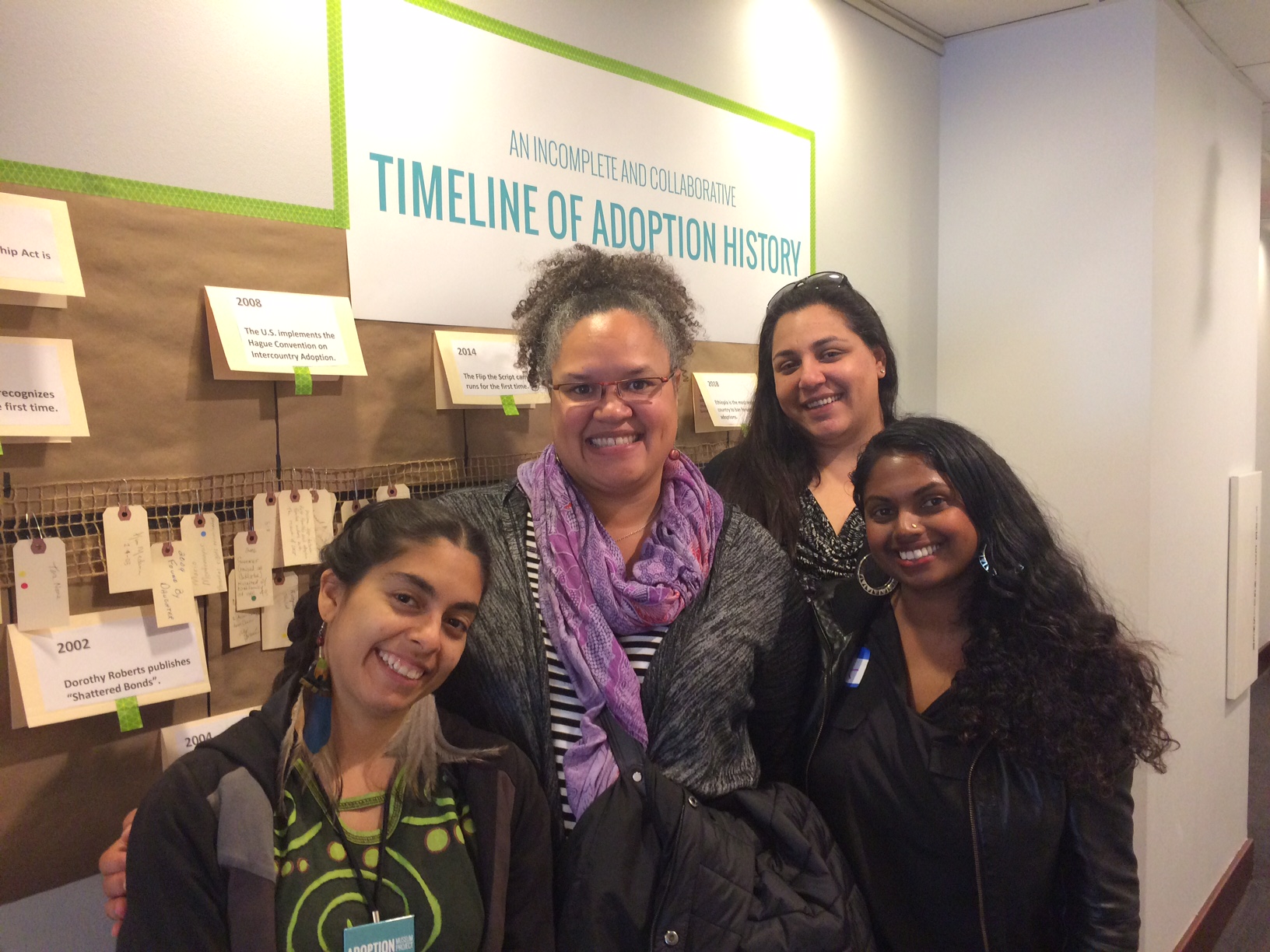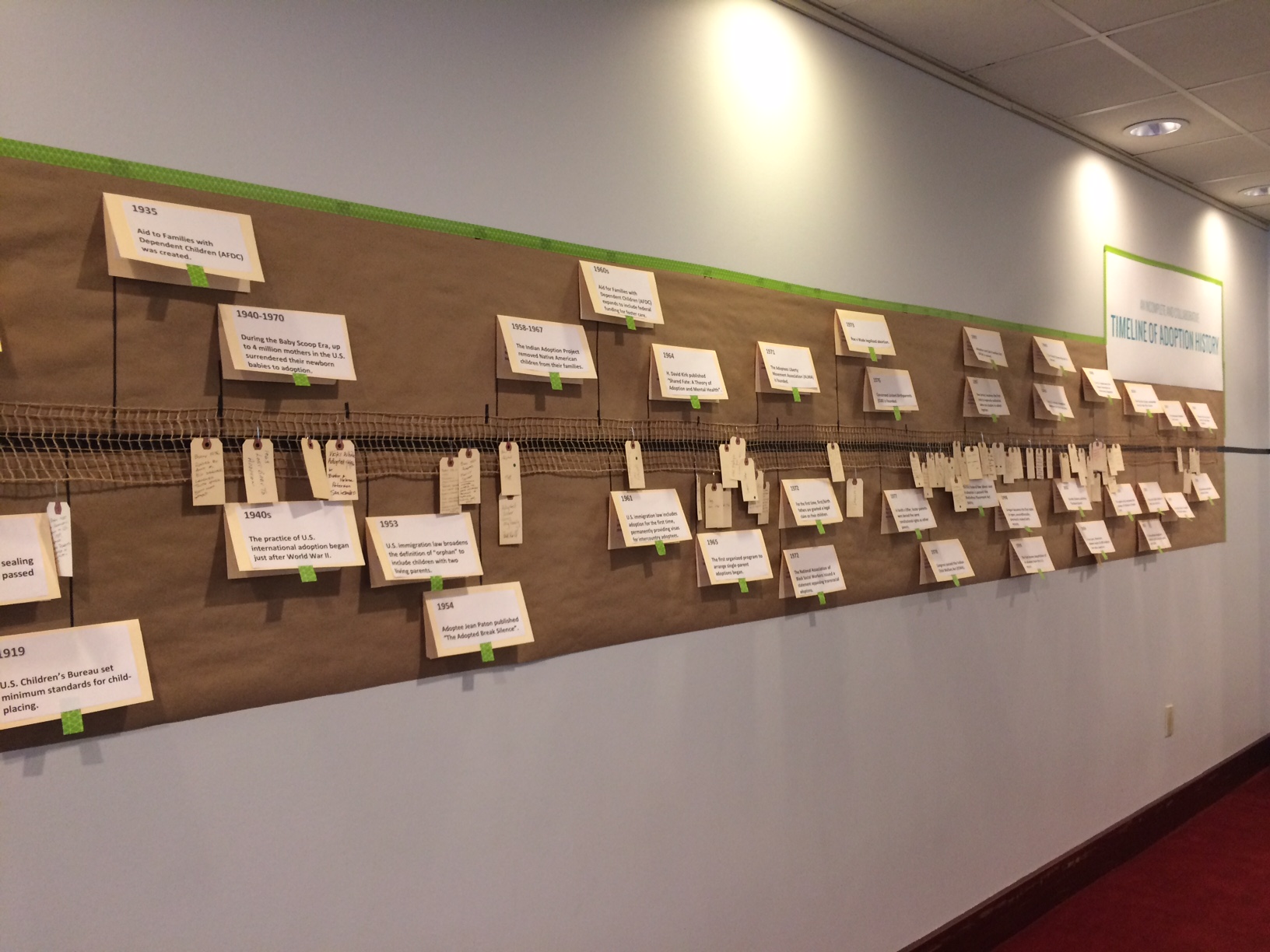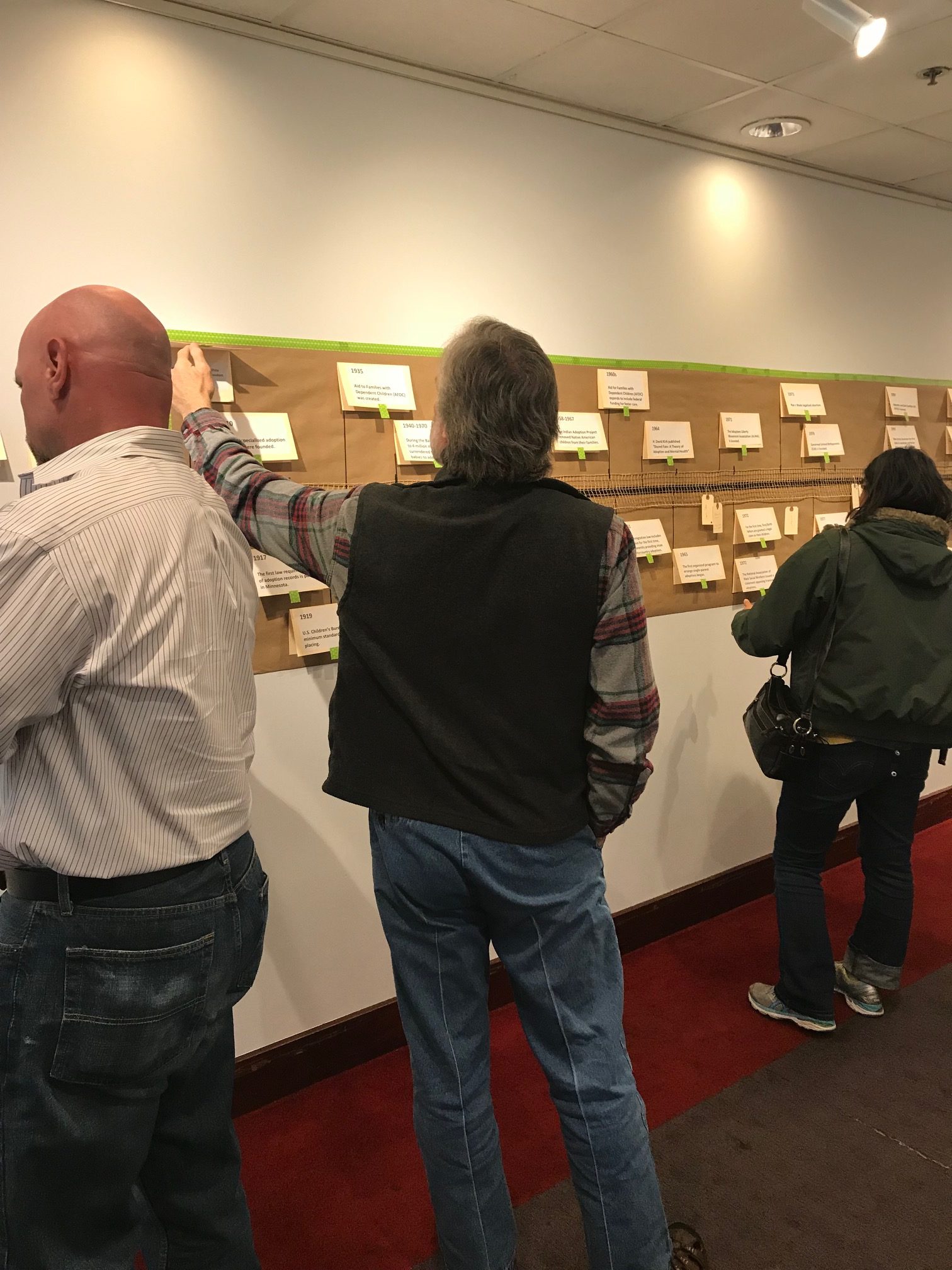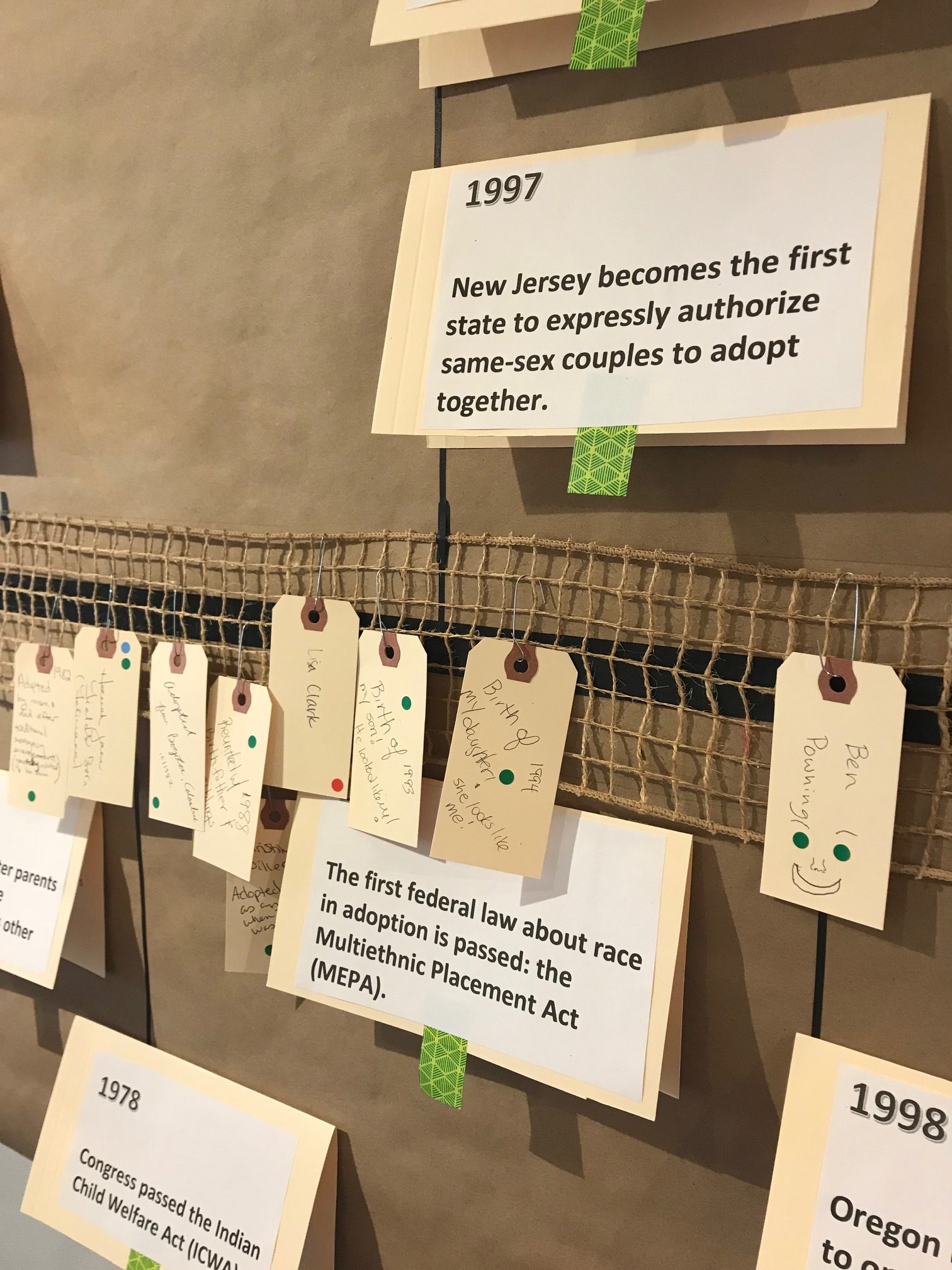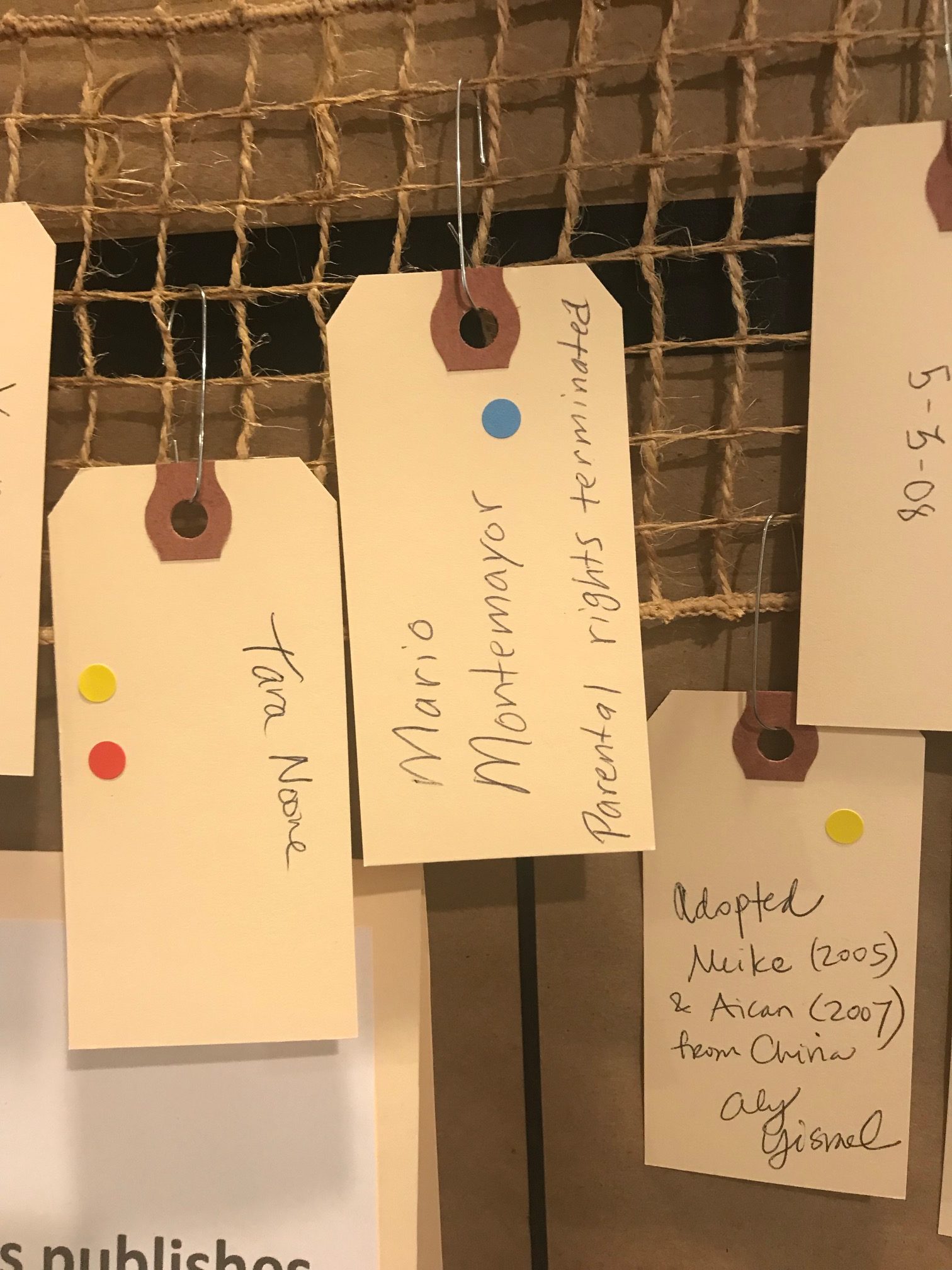CAC 2018
Interactive Timeline: A Prototype
THE IDEA
How can we invite a diverse group of conference attendees to interact with adoption history? With that question in mind, we developed a 20-ft. interactive timeline of adoption history for the California Adoption Conference 2018.
The title of the installation “An Incomplete and Collaborative Timeline of Adoption History” acknowledges core ideas: our timeline showed just a fraction of adoption’s history; history is always changing, both backwards and forwards; and the events that were displayed, and how the events were described, reflected the perspectives and work of multiple people.
OUR GOALS
We hoped that the timeline could benefit attendees in several different ways:
- Think about adoption differently: it is a complex system with a long history, rooted in social justice issues
- Encourage self-reflection: “I am part of this system and history”
- Learn something new about the history of adoption
- Connect with other attendees, including people who hold different adoption positions
- Place conference sessions (e.g. supporting individuals and families) into a larger historical context
THE DESIGN
We designed the timeline as a physical installation that would take up space, so that attendees could experience, in both their bodies and minds, the enormity of adoption history.
The timeline encouraged different types of interactivity:
Learn about historic events in adoption. The timeline included 45 historic events in U.S. adoption, from the first modern adoption law in 1851 through 2018. This events were chosen to reveal how adoption is linked to social justice, and give a sense of the breadth of issues and populations involved in adoption.
Place yourself on the timeline. Attendees could choose any date in adoption that had personal meaning for them, write it on a tag, and place the tag on the timeline. Tags held the dates of relinquishing a child, being adopted, losing parental rights, adopting a child, reuniting with first family and more. These tags became part of adoption history.
Provide input. Using post-it notes, attendees could add an event to the timeline, ask a question about adoption history, or provide feedback about the installation. This input became part of the experience.
Engage in conversation with other attendees. By virtue of occupying shared physical space, attendees fell into conversations about what they were learning, feeling or wondering. Simply observing others engaging with the timeline was a kind of collective, silent conversation among a group of people connected to adoption history in many different ways.
The timeline was a first prototype, using inexpensive materials and containing minimal content and simple interactivity. Our intention was to provide enough of an experience that attendees would feel engaged while minimizing resources, so we could deliver value even as we were learning.
PROJECT DEVELOPMENT
The timeline was designed, produced and installed by Laura Callen, Zöe Klein, and Terri Lambert. Signage was designed by Elisa Lewis. Timeline content was selected and edited by Laura Callen in collaboration with Kelly Condit-Shrestha, Beth Hall, JaeRan Kim, Susan Leksander, and Suzi Martinez Carter. Key sources: The Adoption History Project, Yong Chan Miller.
WANT TO GET INVOLVED?
If you would like to help us further develop this prototype, or if you would like to use our timeline for an event or project, please get in touch with us: info@adoptionmuseumproject.org.
 Nav Menu
Nav Menu